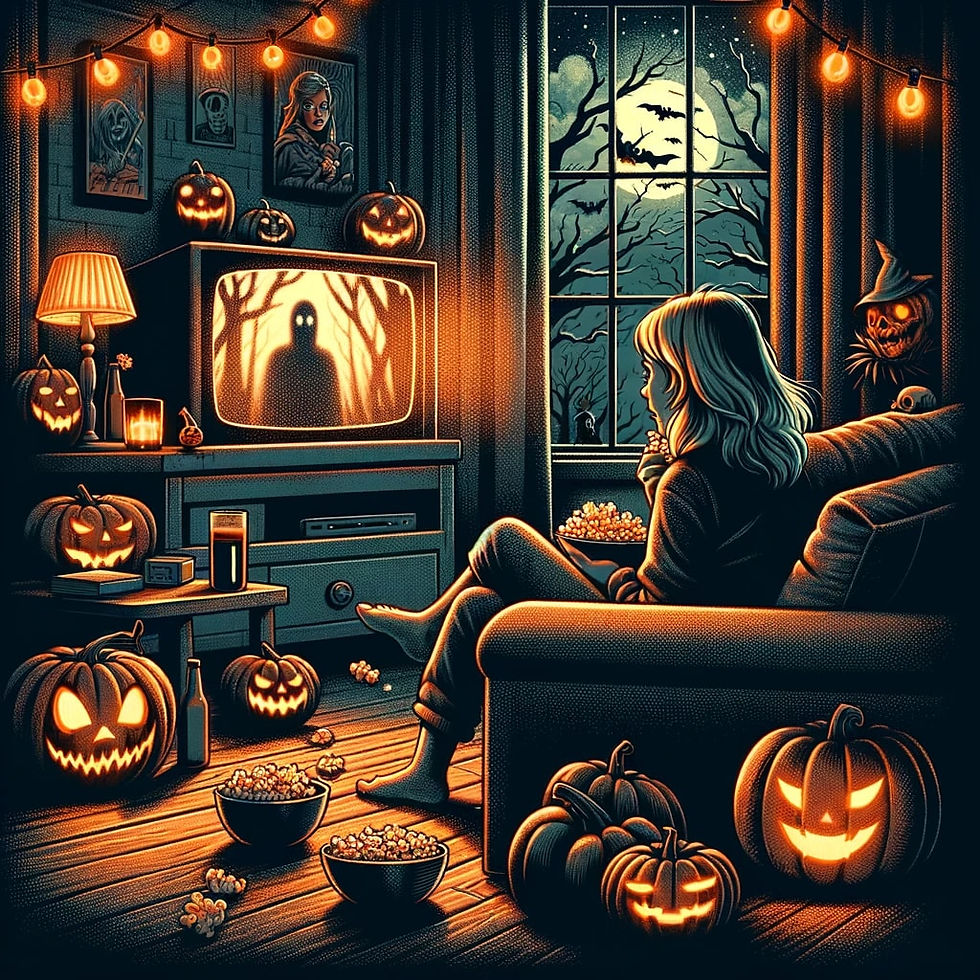Zombies, Ghosts, and Ghouls: The Monsters of Halloween
- Allan Major

- Apr 3, 2024
- 2 min read

Halloween wouldn't be Halloween without them. The shuffling hordes. The spectral moans. The graveyard stink of decay. These aren't just costumes we don, but echoes of our deepest fears made flesh (or what's left of it). Zombies, ghosts, and ghouls – the unholy trinity of horror – have a chokehold on this hallowed night that time can't loosen. But why? What is it about these tattered archetypes that gets our blood pumping even as it curdles in our veins?
Let's dissect these creatures of the night and see what makes them tick, shall we?
Zombie Movies Through the Ages
First up is the granddaddy of modern horror: the zombie. Rotting, relentless, and ravenous for the flesh of the living – what's not to adore? These reanimated corpses aren't just scary, they're a brutal mirror. They force us to confront the fragility of life, the inevitability of decay. It's not the bite that gets you; it's the unstoppable reminder of your own mortality.
From George Romero's social commentaries disguised as carnage flicks to the sprinting terrors of the 2000s, zombies keep evolving. They reflect our anxieties. In the Cold War, they were faceless hordes, the fear of communism made monstrous. Today, they might be infected, fueled by viral paranoia. They're our anxieties given a hungry, decaying form.

The Evolution of Ghost Stories in Cinema
Where zombies are about the body, ghosts haunt the psyche. They're unfinished business, lingering echoes of trauma or malice. A spectral figure in a Victorian nightgown is chilling because it hints at a past injustice. A flickering shadow in the mirror is terrifying because it violates our sense of self.
Ghosts exploit our primal fear of the unknown. They can be benevolent, malevolent, or twisted reflections of our own regrets. Whether it's the classic Gothic haunted house or the J-horror craze of vengeful spirits, ghosts tap into the age-old tradition of sharing tales around the fire...except the monster might be lurking right over your shoulder.

Ghouls: From Folklore to Film
Let's not forget the unsung heroes of Halloween: the ghouls. These graveyard gourmands are where the grotesque meets the darkly humorous. They're not tormented souls or mindless masses; they're scavengers with a morbid appetite. Ghouls revel in the macabre. They remind us that even in death, there's something base, something hungry lurking below the surface.
Whether they're the classic, shambling cryptid or the cunning, almost demonic creatures found in modern fantasy, ghouls add a touch of the grotesque that spices up the monstrous stew.
Why We Love to be Scared
These are just the grand pillars of terror, of course. Halloween's bestiary is vast and ever-evolving. But zombies, ghosts, and ghouls remain the cornerstone. They represent the core fears that lurk in the human psyche – death, the unknown, our own capacity for cruelty.
Halloween lets us confront these fears in a safe space. We don the costumes, watch the films, and revel in the thrill of being scared. It's a catharsis, a way to dance with the darkness and perhaps emerge a little braver, a little more appreciative of the fragile beauty of life. After all, without the night, how could we truly cherish the dawn?






